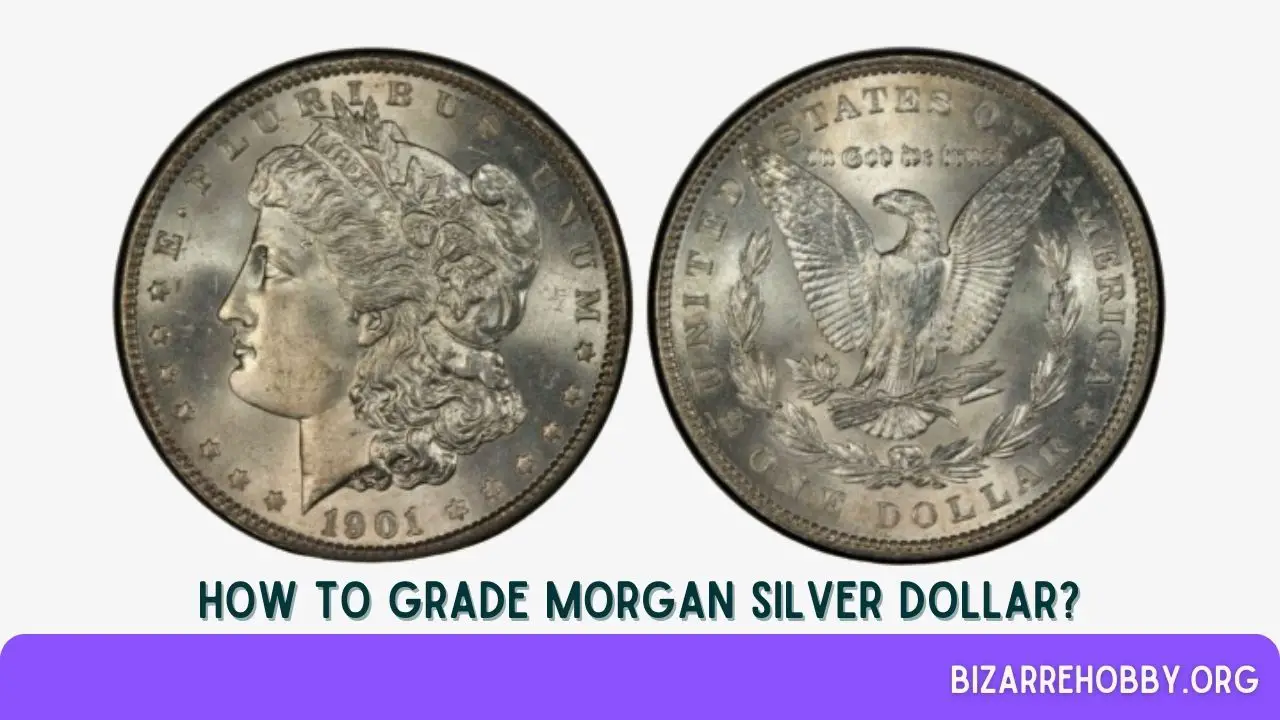Initially, Morgan Silver Dollars were not intended for everyday use. Their primary purpose was to support the American silver mining industry, resulting in millions of these coins being stored in Federal Reserve banks or Treasury Department vaults.
In the late 1950s, collectors began to appreciate these beautiful coins, purchasing numerous bags of mint state specimens by 1964.
When determining how to grade Morgan Silver Dollars in your collection and estimate their value, consider that many uncirculated coins still exist.
Table of Contents
Grading Standards For Morgan Silver Dollar
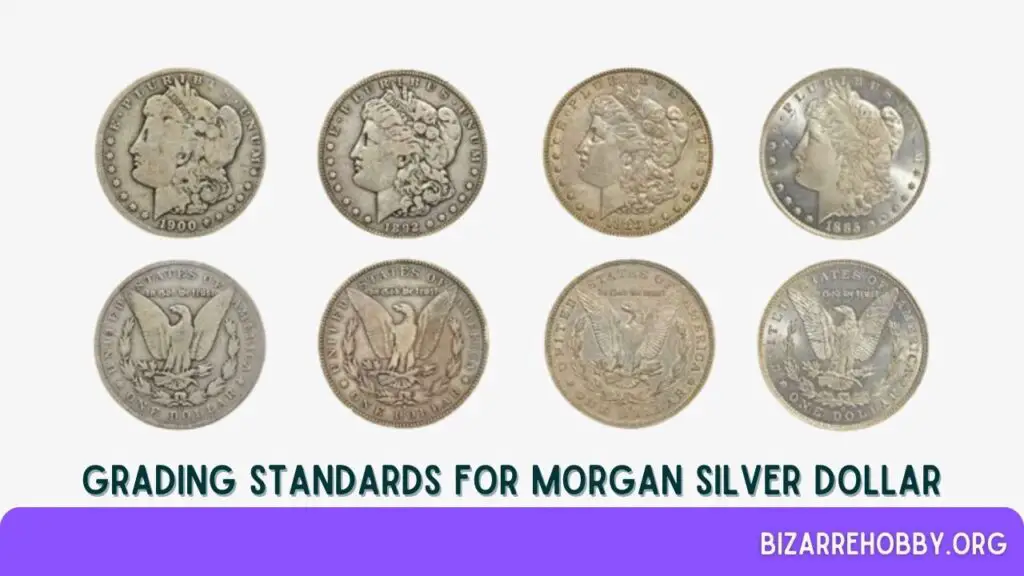
Newcomers often struggle with the intricacies of coin evaluation, even when using the Sheldon grading scale. To simplify the process, start by categorizing your coin into one of three groups:
- Circulated Coins: This group includes both non-collectible and collectible pieces in lower grades.
- About Uncirculated Coins: Coins that show minimal signs of wear.
- Mint State Coins: Uncirculated coins that have never been used in transactions.
The Sheldon scale grades coins from 1 to 70, with the majority of circulated coins falling between P 1 and EF 49. The lowest three grades (Poor, Fair, and About Good) describe heavily worn, non-collectible coins.
While coins in Good grades and above are collectible, most numismatists prefer those graded at least AU 50. Uncirculated coins are graded from MS 60 to MS 70, depending on their appearance and lack of imperfections.
Understanding Grades for Morgan Silver Dollar
Grading sizable, heavy, old silver coins like Morgan dollars requires careful evaluation. Despite their popularity and collectibility, even lower-ranked specimens can be desirable.
However, these coins are made of 90% soft and malleable silver, which can make achieving a complete design during minting challenging. The added copper in the alloy makes the coins harder and more durable for circulation.
Pay close attention to the strike quality of each coin. For example, Liberty’s hair covering her ear is sometimes only partially struck, even in uncirculated Morgan dollars, which can confuse less experienced collectors.
In such cases, the presence or absence of wear can help determine whether a coin is circulated or in mint state. This highlights the limitations of even the best grading guidelines and underscores the importance of professional assessment.
| Sheldon Scale | Grade |
|---|---|
| 1 | Basal State-1 |
| 2 | Fair |
| 3 | Very Fair |
| 4, 5, 6 | Good |
| 7, 8, 10 | Very Good |
| 12, 15 | Fine |
| 20, 30 | Very Fine |
| 40 | Extremely Fine |
| 50 | About Uncirculated |
| 60 | Mint State |
| 65 | Mint State |
| 70 | Mint State |
Details Of Morgan Silver Dollar
| Specification | Detail |
|---|---|
| Face value | One dollar ($1) |
| Compound | Silver |
| Coin Weight | 0.859 troy ounces (26.73 g) |
| Coin Diameter | 1.5 inches (38.10 mm) |
| Coin Thickness | 0.094 inches (2.40 mm) |
How to Grade Morgan Silver Dollar?
Grading Morgan Silver Dollars involves examining specific high points that wear first. Start with these areas and then proceed to other details.
1. About Good (AG 3)

In this condition, Morgan Silver Dollars are heavily worn with barely readable inscriptions. The date on the obverse remains clear and complete, though other details are faint.
- Obverse: Lady Liberty’s head is outlined, but the design is nearly invisible, flat, and lacks detail. Stars and inscriptions are flat and partially blend with the rim, while the date, though worn, is legible.
- Reverse: The eagle is outlined without feather or body details. Letterings are worn out and merge with the coin rim.
2. Good (G and G 4)

These coins are heavily worn with a barely recognizable design and faint legends. The date is complete but faint in some areas.
- Obverse: Letterings are full and do not blend with the rim. Some details in Liberty’s cap are visible, but the hairline is barely noticeable, and hair strands above the forehead are merged. Her ear, eye, lips, and cotton blossoms are visible, though flat.
- Reverse: The eagle’s body is well-defined but flat, with some feathers visible in the lower half of the wings. Arrows and letterings are recognizable, though smooth.
3. Very Good (VG, VG 8, and VG 10)
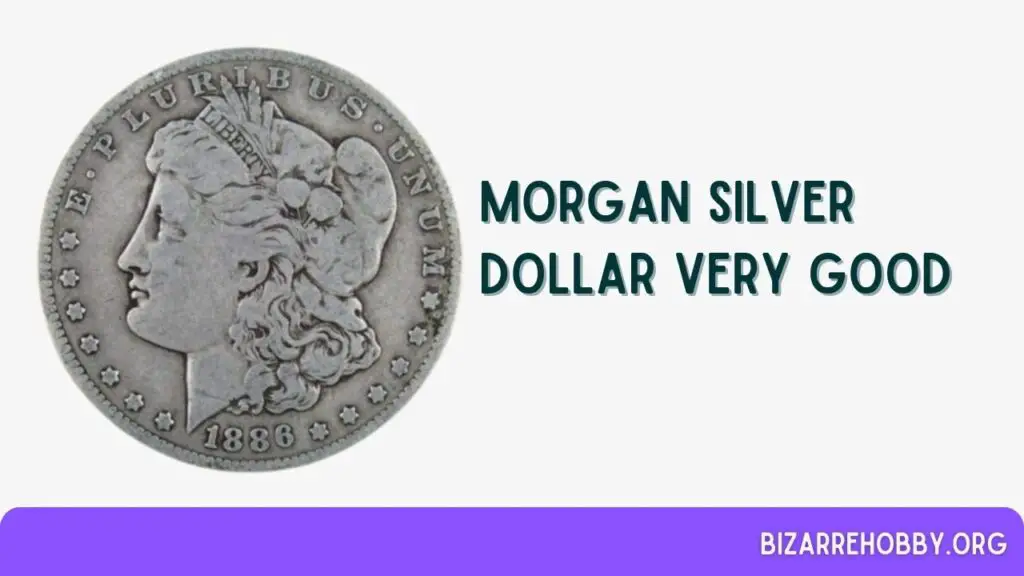
These coins have a defined design despite noticeable wear. The rim is full and separated from the fields.
- Obverse: Lady Liberty’s hair behind her neck is partially detailed. About two-thirds of her hairline is visible, but cotton bolls are flat. The ear and the word LIBERTY are clearly defined.
- Reverse: The eagle has half to two-thirds of its feathers visible, with basic details in the wreath leaves. Some parts of the wings and leaves are smooth.
4. Fine (F, F 12, and F 15)
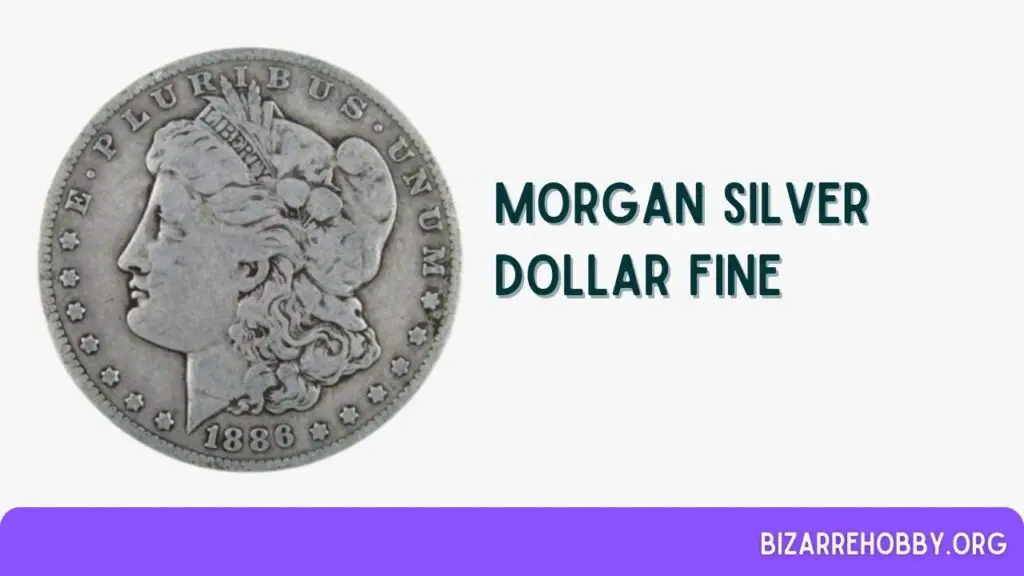
These coins show moderate wear with bold major design parts. Legends, the date, and the mint mark are clear and legible.
- Obverse: Lady Liberty’s profile is well-detailed. The cap is distinct, and the hairline and flowing hair are visible. Cotton bolls show at least two lines, and leaves are separated.
- Reverse: Three-quarters of the eagle’s wing details are visible, but the neck, head, breast, and tail feathers are flat. More details are visible on the wreath leaves.
5. Very Fine (VF, VF 20, VF 25, VF 30, and VF 35)

These coins exhibit slight to moderate wear on the highest points, but their overall condition is attractive. Stars and lettering are lightly worn, and the surface lacks mint luster.
- Obverse: Hair details are evident, though the highest points are flat. Wheat grains, cotton bolls, and leaves are defined but flattened. Hair strands above the ear and behind the neck are more or less separated.
- Reverse: The eagle’s wing feathers are distinct, though worn. Wing tips are weak but recognizable. Feathers on the breast are flattened, and the leaves in the wreath are well-defined but smooth.
6. Extra Fine (EF 40 and EF 45)
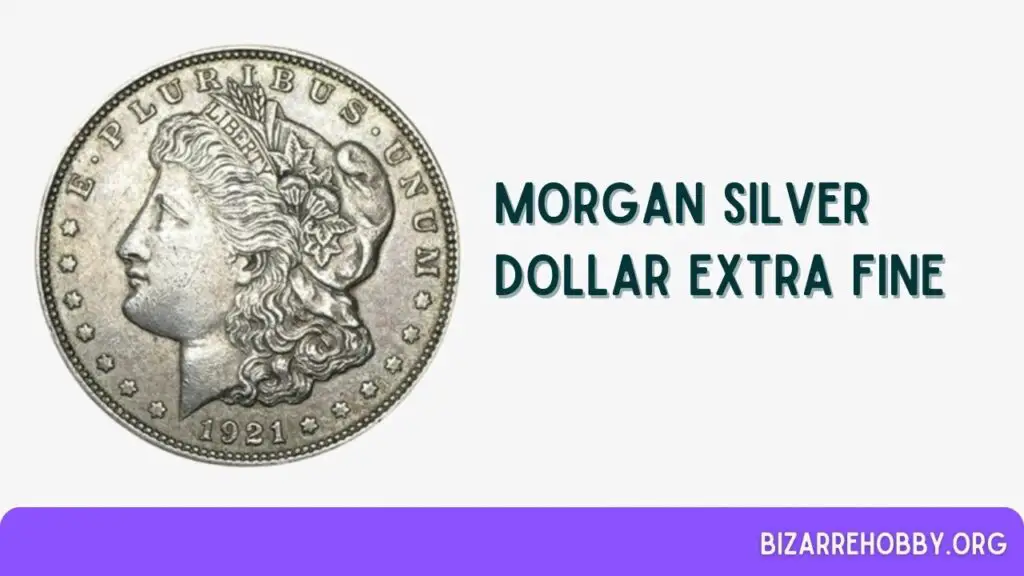
These coins are highly collectible due to sharp design details with slight wear on the highest points. Design elements are well-defined, and traces of mint luster are visible except on Liberty’s cheek.
- Obverse: Wear is visible on Lady Liberty’s ear, hair, and forehead. Remaining details are sharp, providing an elegant look. Cotton flowers and leaves are recognizable, and hair strands are mostly separated, though the cheek is lightly worn.
- Reverse: Eagle wing feathers are well-defined but smooth at the neck, breast, and claws. Most wreath leaves show delicate details except for the flattened highest spots.
7. About Uncirculated (AU 50, AU 55, and AU 58)

These coins show minimal wear, having spent little time in circulation. Most details and mint luster are preserved.
- Obverse: Slight wear is visible on Lady Liberty’s forehead, cheek, ear, eye, and curls. Similar changes are seen on cotton leaves, blossoms, and the Phrygian cap’s upper fold. Mint luster is present except on her cheek.
- Reverse: Feathers on the eagle’s breast are detailed, with minimal wear on the head and claws. Finer wreath details are visible, and mint luster is recognizable on most parts, though bag marks and abrasions are present.
8. Mint State (from MS 60 to MS 70)
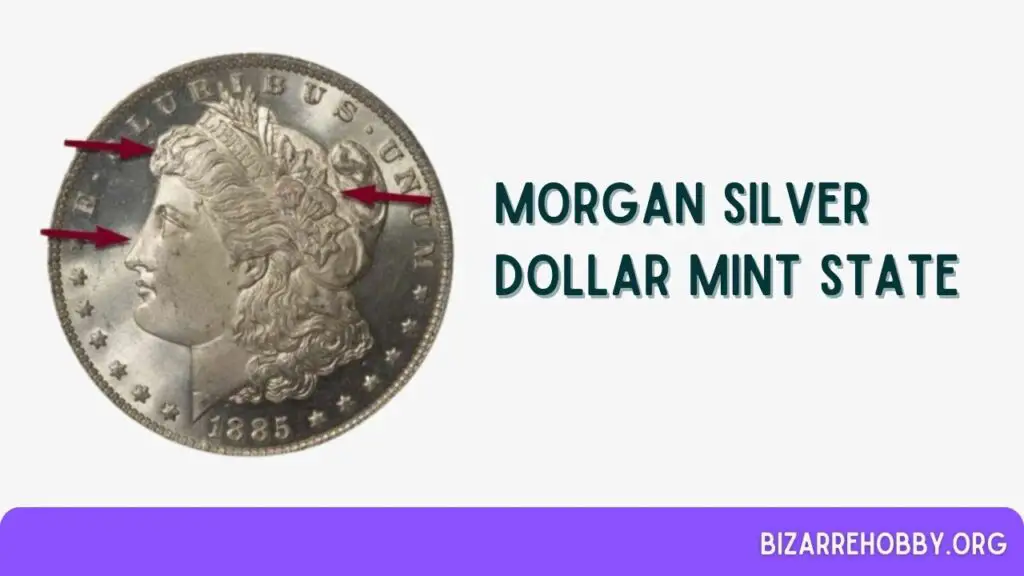
These coins are nearly perfect, having never been in circulation. They may show bag marks or contact traces from storage.
In mint state Morgan Silver Dollar, Liberty’s hair above her eye and along her forehead should show no wear. If there are no traces of wear, the coin is a perfect uncirculated specimen.
Final Thoughts
Most Morgan Silver Dollars were never released into circulation, leading to significant accumulations in mint state. This affects their prices, along with each piece’s quality, rarity, and preservation. The ANA’s adoption of numerical grades from MS 60 to MS 70 in the 1970s reflects these distinctions.
